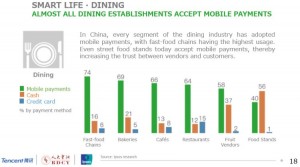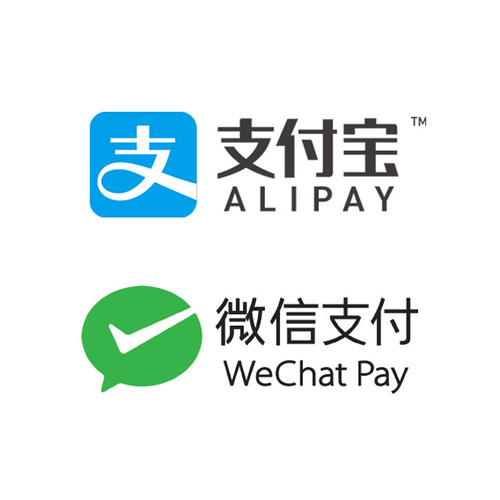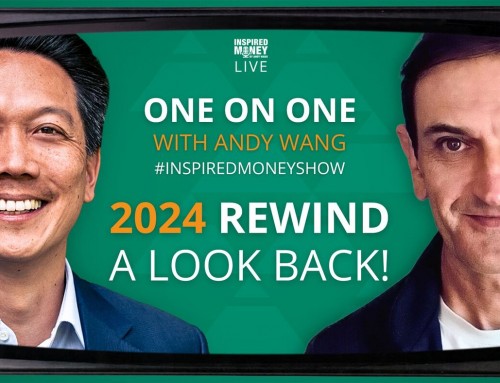The move to cashless society
In the US, people's preferred method of payment is credit card. We are used to carrying plastic in our wallets and don't mind running up some debt. Credit cards haven't taken hold the same in China and that has allowed mobile payments to step in to fill the payment gap. For the most part, Chinese are linking their bank card (ATM/Debit) to their mobile app to make most of their purchases.
In a recent study called “2017 Mobile Payment Usage in China,” more than half of WeChat users said they conduct less than 20% of their monthly transactions in cash. Furthermore the study found that WeChat users said they only pay with cash when no other payment methods are available (73%) or during small transactions (46%). Empty pockets are the new fashion with 40% of Chinese carrying less than RMB 100 cash (roughly $15) in their wallet — and for the majority, RMB 100 can last up to a month.
Service industries lead the way

This chart shows how much mobile payments dominate the Chinese lifestyle and how little credit cards come into play. Service industries like dining, retail, entertainment and travel are the areas that excel in mobile payments. This type of payment is so ubiquitous that 40% of food stand transactions are by mobile. In retail, 68% of merchants accept mobile payment methods with similar penetration in supermarkets and malls.
China is clearly leading the way in mobile payments and that will continue well into the future. The two leaders in the space are WeChat (Tencent) and AliPay (Alibaba). They are the giants in the sector and will dominate for years to come.
“WeChat Pay and AliPay” by VictoryKm is marked with CC0 1.0







